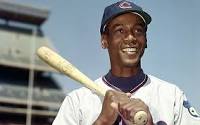It has been a half-century to the day (September 10, 1969) since the Chicago Cubs lost their seemingly insurmountable lead over the eventual World Series champion New York Mets in a loss to fifth-place Philadelphia on a Johnny Callison RBI single.
Longtime Cubs fans recall the nine-game advantage they owned in mid-August and the Ken Holtzman no-hitter August 19 against the Atlanta Braves at Wrigley Field that seemed to cement the Cubs as a team of destiny. Fans figured it was only a matter of time before Chicago would celebrate its first National League flag in 24 years. They had recently won two games (one suspended) September 2 at Cincinnati and led by five games with 25 to play.
Then it happened. First, the Pittsburgh Pirates – who had not won in six games at Wrigley Field that season – swept the Cubs three straight at the Friendly Confines. Chicago was one out away from salvaging the Sunday game when Willie Stargell homered onto Sheffield Avenue off Phil Regan to tie the game. The Pirates scored two unearned runs in the 11th to win. Then it was the Black Cat and the apparent tag of Tommie Agee at home plate in New York. The Mets won, 3-2, and then 7-1 to come within a half-game of first place. Twenty four hours later, the Cubs were in second place as the Mets beat the Montreal Expos and the Cubs lost to the Phillies.
Did everything simply go wrong in September? Did losses to the Mets in July provide a precursor to the inevitable? It is hard to say. In retrospect, the Cubs needed another starting pitcher, another left-handed bat in the lineup and perhaps a more active bench that had performed well in spot duty until the last month of a hectic pennant race.


Mr. Cub Ernie Banks (L) and third baseman Ron Santo (R)
Manager Leo Durocher has been blamed for staying with his regular lineup and having his four starters – sometimes three in Fergie Jenkins, Bill Hands and Holtzman – pitch deep into games until they could not do it anymore down the stretch. Note that the team also failed to have a .300 hitter, an effective right-field platoon (unlike the Mets who had Art Shamsky and Ron Swoboda make well-rested contributions) and stole just 30 bases as a team. Earned run averages balooned and batting averages deflated in a total collapse.
Something like this may not happen today, with a late trading deadline, free agent signings and well-stocked bullpens. Perhaps the Cubs’ failure and the Mets’ use of five starting pitchers and three or more relief pitchers actually ushered in the modern era. Regardless, as a 10-year-old, I didn’t know if the Cubs were overconfident, tired, complacent, or deficient. I just know it was a fun summer until the harsh realities of a long a season set in. The Cubs were may favorite team with several great players. Even the 2016 World Series title did not repudiate my love for the 1969 Cubs or the sadness of losing a pennant that seemed well in hand.

I’m enjoying your history of Badger baseball. I, myself, am researching the Madison Blues semi-pro team for a possible story in the newspaper Isthmus. I’ve been compiling the team’s win-loss records and so-on, but I’m wondering if you may have come across someone who might already have that data, or would be a good source. Thanks!